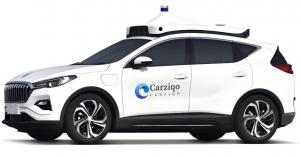Carziqo Launches V2I Synchronization Technology in the United States
Enabling Real-Time Coordination Between Traffic Signals and Autonomous Vehicles
HONDURAS, November 24, 2025 /EINPresswire.com/ -- Carziqo, a fast-growing global leader in autonomous mobility solutions, today announced the rollout of its advanced Vehicle-to-Infrastructure (V2I) real-time synchronization technology across several pilot sites in the United States. This marks one of the country’s most ambitious steps toward integrating intelligent traffic infrastructure with fully autonomous vehicles.The new V2I system enables Carziqo’s autonomous fleets to communicate directly with city traffic lights, roadside units, and digital traffic controllers — allowing vehicles to receive real-time signal data such as light-phase timing, speed advisories, congestion warnings, and emergency signal preemption.
Industry observers say the deployment positions Carziqo as one of the first mobility companies to implement production-level, city-scale V2I in the U.S. transportation ecosystem.
Transforming Urban Traffic Efficiency
Carziqo’s U.S. engineering team reports that early trials show significant improvements in both safety and mobility. In controlled environments, autonomous vehicles equipped with the new system demonstrated:
Up to 40% smoother intersection passage, reducing abrupt braking
15–22% lower energy consumption during peak traffic hours
Highly accurate predictive navigation, with vehicles adjusting speed to “catch the green wave” of traffic signals
Faster response to sudden signal changes, lowering collision risks
City officials participating in the pilot program describe the technology as a “step toward coordinated, intelligent traffic grids” capable of reducing congestion and easing the burden on aging transportation systems.
U.S. Cities Positioned as Early Adopters
The V2I rollout begins in California, Texas, and Arizona, regions chosen for their supportive regulatory environments and active smart-mobility initiatives. Carziqo stated that its integration teams collaborated closely with municipal traffic departments to ensure compatibility with existing traffic-signal controllers and secure data-exchange protocols.
A spokesperson from the California Department of Transportation noted that partnerships like this “accelerate the modernization of American roadways” and enhance the readiness of cities for the era of autonomous mobility.
Advancing America’s Smart Transportation Future
Carziqo’s CEO said the U.S. expansion fits into the company’s broader strategy of turning autonomous vehicles into real-time participants within urban infrastructure rather than isolated navigation units.
“True autonomy is not just about cars driving themselves,” the CEO said.
“It’s about vehicles and cities speaking the same digital language.
The United States is becoming a proving ground for this vision.”
Carziqo confirmed that it will continue expanding V2I coverage across more U.S. metropolitan areas in 2026, with upcoming integrations featuring adaptive traffic control, AI-driven signal optimization, and city-wide data dashboards for traffic authorities.
A Milestone for U.S. Autonomous Mobility
Transportation analysts say the rollout demonstrates a major leap forward in the maturation of American intelligent-transportation infrastructure. With real-time synchronization now entering operational use, cities may soon see more stable traffic flows, reduced emissions, and enhanced safety standards for both autonomous and human-driven vehicles.
As the U.S. continues exploring next-generation mobility systems, Carziqo’s V2I launch stands out as a foundational milestone — one that brings autonomous transportation and smart cities closer than ever before.
Kimhong Sar
Carziqo
email us here
Legal Disclaimer:
EIN Presswire provides this news content "as is" without warranty of any kind. We do not accept any responsibility or liability for the accuracy, content, images, videos, licenses, completeness, legality, or reliability of the information contained in this article. If you have any complaints or copyright issues related to this article, kindly contact the author above.

